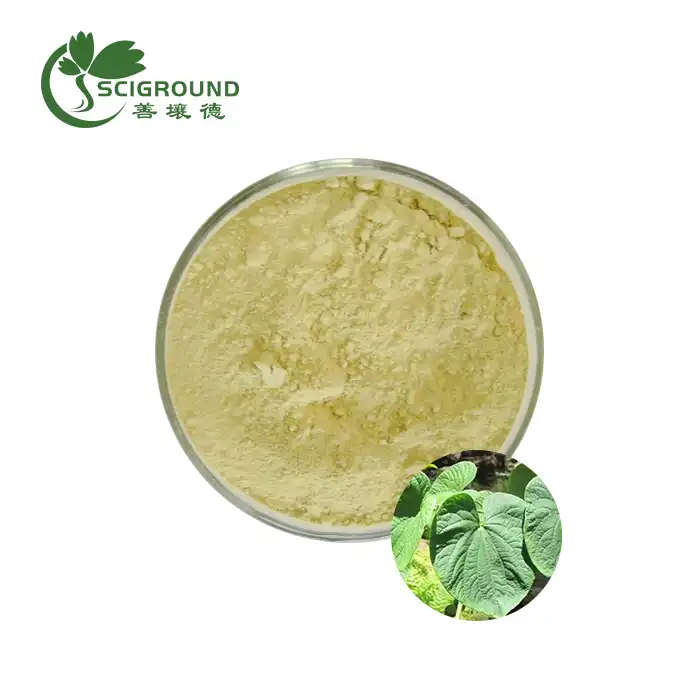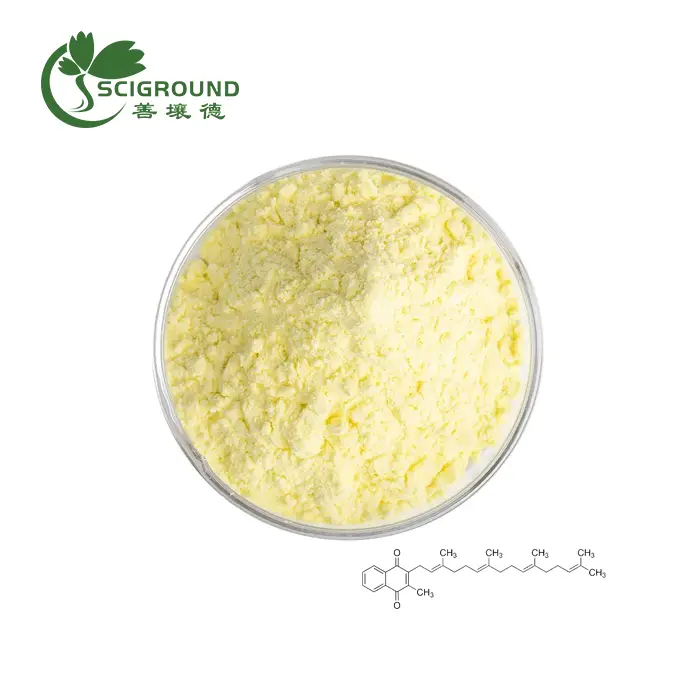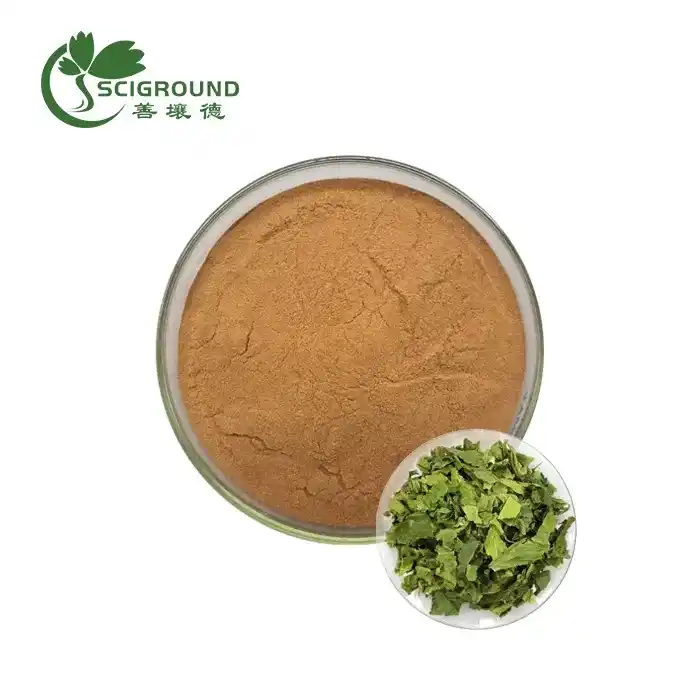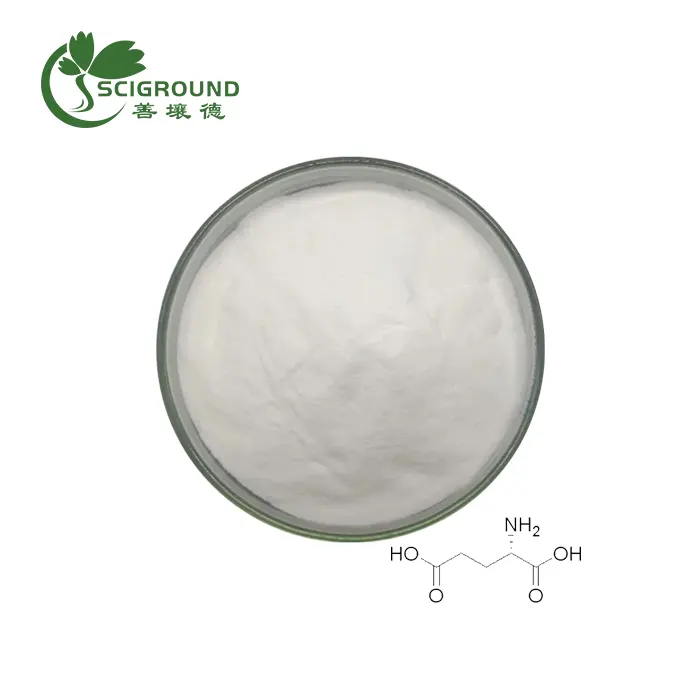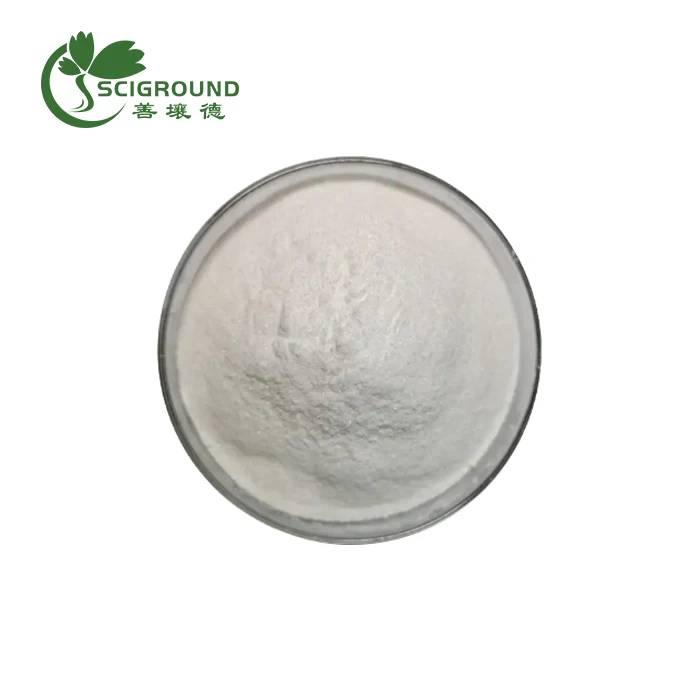What is aescin used for?
Aescin, a remarkable compound derived from horse chestnut seeds, has garnered significant attention in the medical world for its diverse therapeutic applications. This natural substance offers a range of benefits, particularly in treating vascular disorders and reducing inflammation. In this comprehensive guide, we'll explore the origins of aescin, its presence in food sources, and the fascinating mechanisms behind its therapeutic effects.
What plant does aescin come from?
Aescin, the star of our discussion, is primarily extracted from the seeds of the horse chestnut tree, scientifically known as Aesculus hippocastanum. This majestic tree, native to southeastern Europe, has been cultivated for centuries and is now found in many temperate regions worldwide.
The horse chestnut tree is not just any ordinary plant; it's a veritable pharmacy in itself. While its seeds are the primary source of aescin, other parts of the tree also contain beneficial compounds. The bark, leaves, and flowers have been used in traditional medicine for various purposes, but it's the seeds that hold the highest concentration of aescin.
The extraction process of aescin from horse chestnut seeds is a meticulous procedure. It typically involves drying and grinding the seeds, followed by a series of extraction steps using water and alcohol mixtures. The resulting extract is then further purified to isolate the aescin compound.
Interestingly, while the horse chestnut (Aesculus hippocastanum) is the most common source, aescin can also be found in other species of the Aesculus genus. For instance, the Indian horse chestnut (Aesculus indica) is another notable source of this valuable compound.
It's worth noting that while horse chestnuts are rich in aescin, they should not be confused with sweet chestnuts, which are edible and belong to a different genus entirely. Horse chestnuts, despite their name, are not suitable for human consumption in their raw form due to the presence of certain toxic compounds.
The discovery of aescin's medicinal properties has led to increased cultivation of horse chestnut trees specifically for pharmaceutical purposes. This has not only boosted the production of aescin-based medications but has also contributed to the conservation of these beautiful trees in many parts of the world.
What food is rich in aescin?
While aescin is predominantly found in horse chestnut seeds, it's important to note that these seeds are not considered a food source due to their toxicity when consumed raw. However, there are some interesting aspects to consider when it comes to aescin and nutrition.
Although horse chestnuts themselves are not edible, there are certain foods and dietary supplements that contain aescin or similar compounds:
- Horse Chestnut Supplements: The most direct way to consume aescin is through standardized horse chestnut extract supplements. These are typically available in capsule or tablet form and are designed to provide a controlled dose of aescin.
- Herbal Teas: Some herbal tea blends include horse chestnut as an ingredient. While the aescin content in these teas is generally lower than in supplements, they can be a pleasant way to incorporate small amounts into your diet.
- Topical Products: Many creams and gels contain aescin as an active ingredient. While not a food per se, these products allow for the absorption of aescin through the skin.
It's crucial to emphasize that consuming raw horse chestnuts or any part of the horse chestnut tree is not recommended and can be dangerous. The aescin found in dietary supplements and approved products has been extracted and processed to remove harmful compounds.
While aescin itself is not commonly found in everyday foods, there are some dietary choices that can support vascular health, which is one of the primary benefits of aescin:
- Flavonoid-rich Foods: Berries, citrus fruits, and leafy green vegetables contain flavonoids, which, like aescin, can support vascular health.
- Omega-3 Fatty Acids: Found in fatty fish, flaxseeds, and walnuts, these can help reduce inflammation and support cardiovascular health.
- Vitamin C-rich Foods: Citrus fruits, bell peppers, and broccoli are high in vitamin C, which supports collagen production and vascular health.
While these foods don't contain aescin, they can complement its effects when used alongside aescin supplements or topical products. It's always advisable to consult with a healthcare professional before starting any new supplement regimen, especially if you're taking other medications or have existing health conditions.
The growing interest in aescin has led to increased research into potential food sources or ways to incorporate it into functional foods. However, as of now, the most reliable and safe way to benefit from aescin remains through standardized supplements and approved topical products.
What is the mechanism of action of aescin?
The mechanism of action of aescin is multifaceted and complex, which explains its wide range of therapeutic applications. Understanding how aescin works in the body provides insight into its effectiveness in treating various conditions, particularly those related to vascular health and inflammation.
Here are the key mechanisms through which aescin exerts its beneficial effects:
- Reduction of Capillary Permeability: One of the primary actions of aescin is its ability to decrease capillary permeability. This means it helps prevent fluid from leaking out of blood vessels into surrounding tissues. By maintaining the integrity of capillary walls, aescin effectively reduces edema (swelling) and improves circulation.
- Anti-inflammatory Action: Aescin exhibits potent anti-inflammatory properties. It achieves this through multiple pathways:
- Inhibition of pro-inflammatory enzymes such as hyaluronidase and elastase
- Reduction in the production of inflammatory mediators like prostaglandins and leukotrienes
- Suppression of neutrophil activation and adhesion to endothelial cells
- Venotonic Effect: Aescin enhances venous tone by increasing the contractility of vein walls. This improvement in venous function helps to reduce venous stasis (pooling of blood in veins) and promotes better blood flow back to the heart.
- Antioxidant Properties: Aescin has been shown to possess antioxidant capabilities, helping to neutralize harmful free radicals in the body. This action contributes to its overall protective effect on blood vessels and tissues.
- Enhancement of Endothelial Nitric Oxide Production: Aescin stimulates the production of nitric oxide by endothelial cells. Nitric oxide is a crucial molecule for vascular health, promoting vasodilation and improving blood flow.
- Modulation of Histamine and Serotonin Activity: Some studies suggest that aescin may act as an antagonist to histamine and serotonin, potentially contributing to its anti-inflammatory and anti-edema effects.
- Influence on Cellular Metabolism: Aescin has been observed to affect cellular metabolism, particularly in terms of energy production and utilization. This may contribute to its overall beneficial effects on tissue health and function.
The synergistic effect of these mechanisms makes aescin a versatile compound in treating various conditions. Its primary applications include:
- Treatment of chronic venous insufficiency
- Management of varicose veins
- Reduction of post-operative and post-traumatic edema
- Alleviation of hemorrhoids
- Potential applications in sports medicine for treating injuries and reducing inflammation
It's important to note that while the mechanisms of action of aescin are well-studied, ongoing research continues to uncover new aspects of its functionality. The complex interplay of these mechanisms contributes to aescin's effectiveness and its potential for future therapeutic applications.
As with any bioactive compound, the effects of aescin can vary depending on the dosage, method of administration, and individual physiological factors. This underscores the importance of using aescin under proper medical guidance, especially when it's being used to treat specific health conditions.
Conclusion
Aescin, derived primarily from horse chestnut seeds, stands out as a remarkable compound with diverse therapeutic applications. Its ability to enhance vascular health, reduce inflammation, and alleviate edema makes it a valuable asset in both traditional and modern medicine. While not commonly found in everyday foods, aescin is available in various forms of supplements and topical products, offering accessible ways to harness its benefits.
The complex mechanism of action of aescin, involving multiple physiological pathways, explains its effectiveness in treating a range of conditions, particularly those related to venous health. As research continues, we may discover even more potential applications for this versatile compound.
If you're considering incorporating aescin into your health regimen, it's crucial to consult with a healthcare professional to ensure it's appropriate for your individual needs and to determine the best form and dosage.
For more information about aescin and its applications, or to explore high-quality aescin products, please don't hesitate to contact us at info@scigroundbio.com. Our team at Shaanxi SCIGROUND is committed to providing top-grade plant extracts and expert guidance to support your health and wellness journey.
References
- Sirtori CR. Aescin: pharmacology, pharmacokinetics and therapeutic profile. Pharmacol Res. 2001;44(3):183-193.
- Pittler MH, Ernst E. Horse chestnut seed extract for chronic venous insufficiency. Cochrane Database Syst Rev. 2012;11:CD003230.
- Dudek-Makuch M, Studzińska-Sroka E. Horse chestnut - efficacy and safety in chronic venous insufficiency: an overview. Rev Bras Farmacogn. 2015;25(5):533-541.
- Vogelgesang B, Brautigam M. Efficacy of Aescin gel in the treatment of blunt impact injuries. Int J Sports Med. 1994;15(1):1-4.
- Frick RW. Three treatments for chronic venous insufficiency: escin, hydroxyethylrutoside, and Daflon. Angiology. 2000;51(3):197-205.
- Guillaume M, Padioleau F. Veinotonic effect, vascular protection, antiinflammatory and free radical scavenging properties of horse chestnut extract. Arzneimittelforschung. 1994;44(1):25-35.
Related Industry Knowledge
- Unlocking the Benefits of Almond Extract Powder for Health and Culinary Delights
- What is the difference between Acorus gramineus and Acorus calamus?
- Is Soybean Seed Extract Comedogenic
- Is Epimedium Poisonous to Dogs
- Is Pea Protein Low FODMAP?
- How much resveratrol should I take
- Soybean Seed Extract: Unlocking the Power of Nature
- The Mighty Maca Root Extract Powder: Revitalize Your Health and Vitality Naturally
- Ganoderma Lucidum Extract Powder: Unlocking the Benefits of Nature's Treasure
- Is Ginkgo biloba safe to take daily?
.webp)
